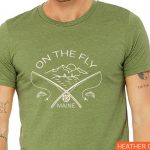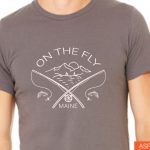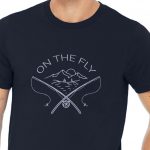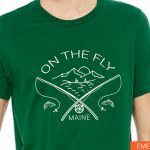Prime Trout Season in Ireland
by Mark Linton, Belfast, N.Ireland
I shouldn’t be writing this, I should be fishing!
It’s prime trout fishing season here in Ireland but the wind is blowing from the east, bitterly cold and gusting to 50 mph. It’s not ideal. The season started well on my local river with big hatches of Large Dark Olives and fish taking the dry fly right from opening weekend. Luckily our season here in Northern Ireland opens on 1st March (a bit earlier than other parts of the British Isles) as the Large Dark Olive hatches are usually well under way by then. Early in the season the hatch only lasts for half an hour or so in the middle of the day but the hatches can be intense and the trout rise to the flies like they’ve waiting all winter for them, which they have.
By the way, for the fly nerds, the scientific name for this fly is Baetis rhodani, you probably have something similar over there in the States. Here’s my two favourite dry flies for this hatch. The first is a no-hackle dun tied with snowshoe rabbit wings, so let’s call it a snowshoe no-hackle.
Snowshoe no-hackle fly pattern
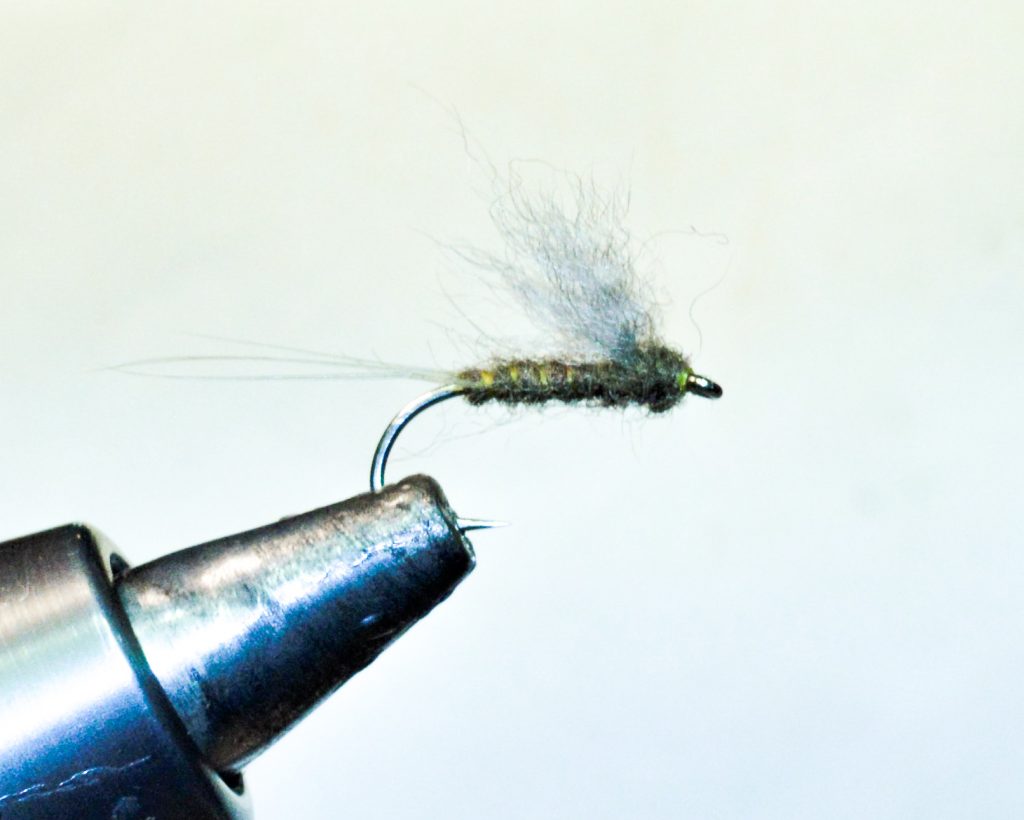
Thread: yellow (I use Uni thread 8/0)
Tail: microfibbets
Body: Fly rite extra fine polypropylene (dark olive)
Rib: leave the tag end of the thread long and use that to rib the body
Wings: two small pinches of dun dyed snowshoe rabbit foot underfur tied in on each side of the thorax area.
Thorax: Fly rite extra fine polypropylene
I tie it on a size 14 dry fly hook for the large dark olives but the colour and size can be varied to match any hatch of upwings. If you find it too fiddly to tie with snowshoe rabbit, you can tie the wings with blue dun polypropylene yarn (I use Aero Dry Wing). ). It will still work, it just doesn’t float quite so well.
If the fish are taking emergers rather than duns then I use the good old-fashioned hare’s ear. I find it works better than other purpose-tied emerger patterns.
Here’s my version which is pretty much the original pattern.
Hare’s Ear fly tying pattern
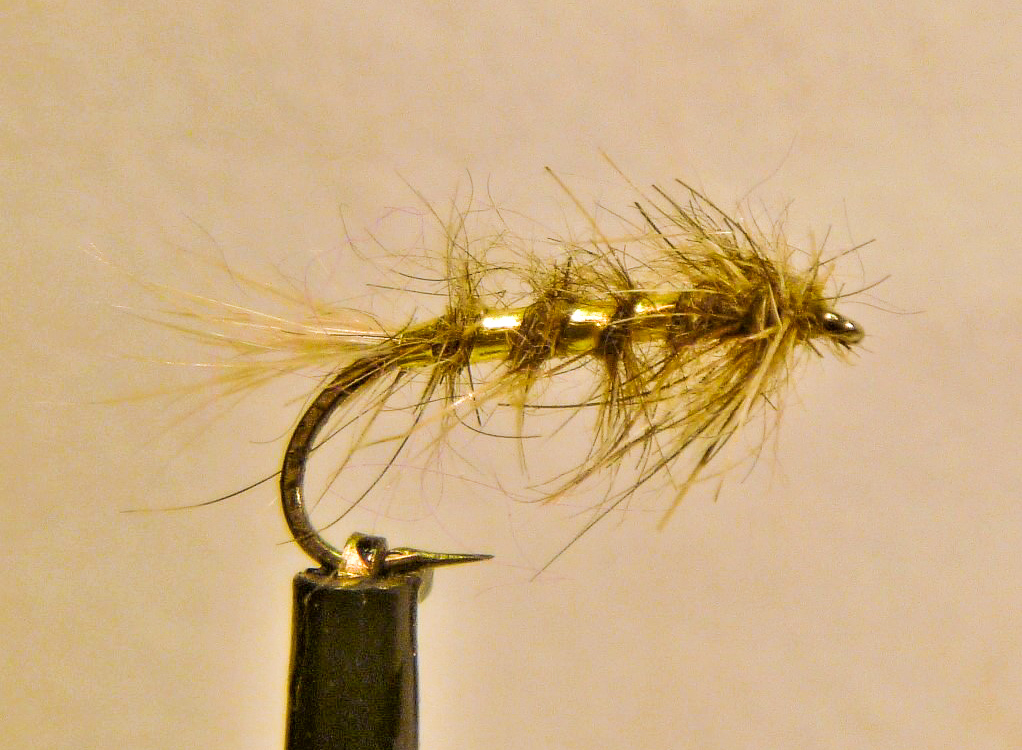
Thread: Whatever is in the bobbin holder
Tail: a small bunch guard hairs from a hare’s body
Body: Fur from a hare’s ear/hare’s mask
Rib: flat gold tinsel (Uni tinsel stands up well to chewing by trout)
Thorax: Hare’s ear/mask with some body hair mixed in to give it extra spikiness (fox squirrel works well too). Pick out the fibres with a needle.
If you want the fly to float well in faster water you can tie in a bunch of snowshoe rabbit (or cdc, if you insist) before dubbing on the thorax.
If you haven’t tried it before then give it a go, you might be surprised how good it is and you can get the added satisfaction of catching fish on a fly that has worked for more than a hundred years- probably longer.
Anyway, after the initial flurry of activity on the rivers, rain set in and we had the wettest March ever recorded here. Of course this meant the rivers were pretty much out of order for about a month, restricting my fishing to the stocked reservoirs nearby. More of which later, perhaps.
Right now the forecast is for warming weather and light southerly winds. I hope so as I’m off to Donegal in the far Northwest over Easter, so hopefully next time I can report on some lake fishing and some beautiful Irish brown trout…fingers crossed.
Feel free to ask questions or comment below..

